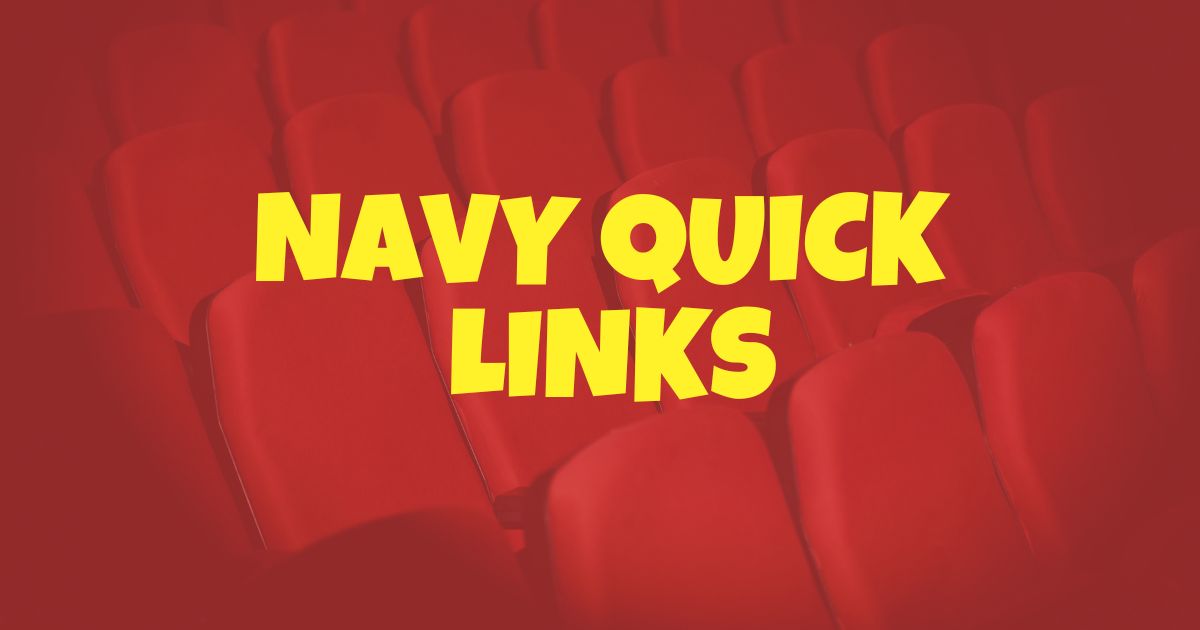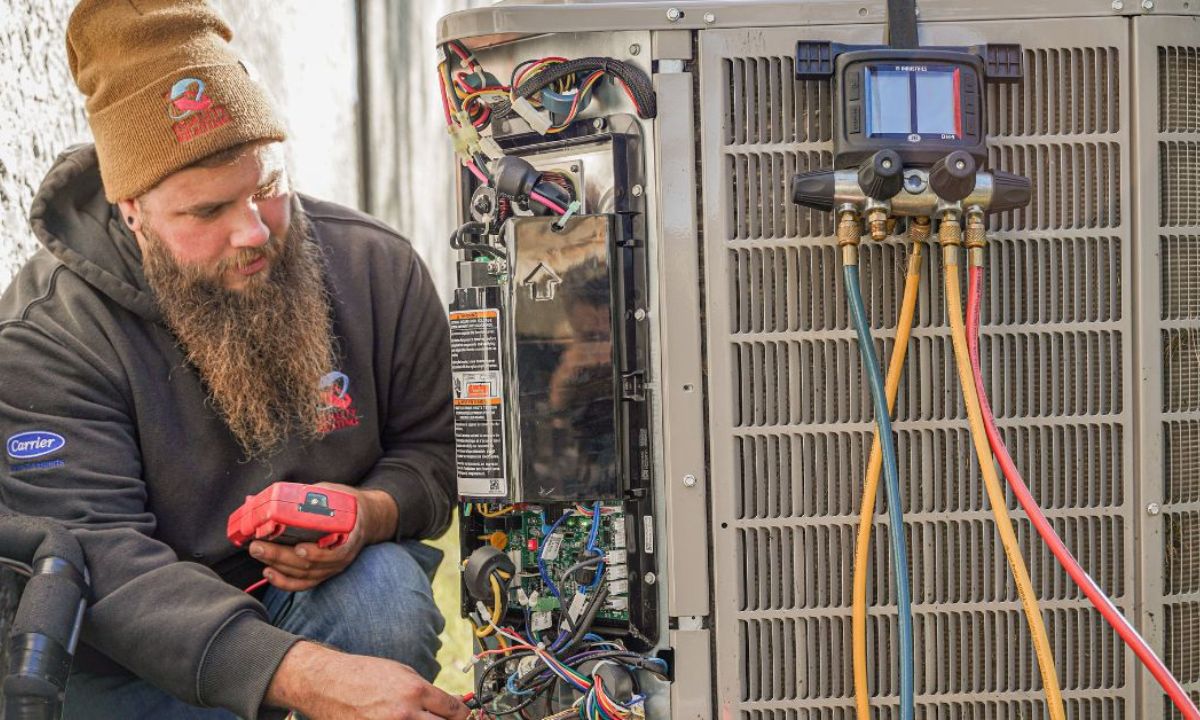General
Navy Quick Links: Essential Resources for Sailors and Personnel

The U.S. Navy provides a variety of online resources to help sailors, veterans, and their families access important information quickly. These “Navy Quick Links” serve as shortcuts to essential portals, tools, and services needed for daily operations, career management, and benefits. In this guide, we’ll explore the most useful quick links for Navy personnel.
What Are Navy Quick Links?
Navy Quick Links are online resources that provide easy access to important Navy systems and services. These links help active-duty sailors, reservists, and veterans efficiently manage their careers, training, pay, and benefits.
Commonly Used Navy Quick Links
Here are some of the most important quick links for Navy personnel:
MyNavy Portal (MNP)
MyNavy Portal (MNP) is the primary hub for sailors to access career information, records, and administrative tools. It includes:
Personnel and Training Records
Career Management Tools
Pay and Benefits Information
BUPERS Online (BOL)
BUPERS Online is a critical platform for managing personal records and career progression. It provides access to:
Detailing and Orders
Performance Evaluations
Official Military Personnel File (OMPF)
Navy Standard Integrated Personnel System (NSIPS)
NSIPS is used for managing administrative tasks, including:
Leave and Earnings Statements
Career Management and Training Records
Performance Evaluations
Defense Travel System (DTS)
DTS is the official travel management system for Navy personnel. It allows users to:
Book Official Travel
File Travel Vouchers
Manage Per Diem and Reimbursements
Naval Education and Training Command (NETC)
NETC provides access to training resources and educational opportunities. It includes:
Navy eLearning (NeL)
Leadership and Technical Training
Career Development Programs
Navy Federal Credit Union (NFCU)
NFCU is a financial institution serving military members and their families. It offers:
Checking and Savings Accounts
Loans and Credit Cards
Financial Planning Services
Navy Exchange (NEX) Online Shopping
NEX is the Navy’s official retail system for discounted shopping on:
Uniforms and Gear
Electronics and Home Goods
Exclusive Military Discounts
TRICARE Health Benefits
TRICARE is the healthcare system for military members and their families. It provides:
Medical and Dental Coverage
Pharmacy Benefits
Online Appointment Scheduling
How to Access N’avy Quick Links Safely
To ensure security when using Navy Quick Links:
Use Official Websites – Always check for “.mil” or trusted government domains.
Enable CAC Access – Some systems require a Common Access Card (CAC) for login.
Avoid Public Networks – Access personal records only on secure devices.
Final Thoughts
Na’vy Quick Links provide fast and easy access to essential resources for service members. Whether managing pay, training, or benefits, these links help ensure smooth career progression and support for military personnel and their families.
FAQs
What is the best way to access Na’vy Quick Links?
The best way is through official Navy websites like MyNavy Portal.
Do I need a CAC to use Navy systems?
Yes, many systems require a Common Access Card (CAC) for secure login.
How do I check my N’avy pay and benefits?
You can check pay and benefits through MyNavy Portal and DFAS.
Where can I find Na’vy training resources?
Training resources are available on Naval Education and Training Command (NETC).
General
Common HVAC Problems That Require Professional Technician Attention

Maintaining a comfortable indoor environment is largely dependent on the performance of your HVAC system. When heating, ventilation, or air conditioning units start to malfunction, it can lead to discomfort and potential damage to your home’s infrastructure. While homeowners can handle some minor issues, many HVAC problems need the careful attention of a trained technician to ensure safety, efficiency, and long-term system health. We will explore some of the most frequent issues that signal the need for professional intervention and how addressing them promptly can save time, money, and frustration.
Common HVAC Issues That Need Professional Help
- Inconsistent Temperature or Poor Airflow
When your HVAC system struggles to maintain a consistent temperature throughout your home, or if certain rooms feel warmer or cooler than others, it often points to airflow problems. This can stem from clogged air filters, blocked vents, or ductwork that has developed leaks or disconnections. Restricted airflow forces the system to work harder, which can lead to premature wear and increased energy costs. While changing air filters is a straightforward task, diagnosing duct leaks or balancing airflow typically requires a local HVAC technician team with tools designed to locate hidden issues and restore proper air circulation.
- Unusual Noises From the System
Strange noises, such as grinding, squealing, banging, or rattling, coming from your HVAC unit are often signs of mechanical trouble. These sounds can indicate worn bearings, loose components, or motor problems. Ignoring these noises can lead to severe damage, such as a motor burnout or broken fan blades. Professional technicians are equipped to open the unit safely, identify the source of the noise, and perform necessary repairs or part replacements. Addressing noisy HVAC systems early helps avoid costly breakdowns and maintains a quieter, more comfortable home environment.
- Frequent Cycling On and Off
If your heating or cooling system is turning on and off more frequently than usual, this short cycling can signal underlying problems. Short cycling not only reduces system efficiency but also increases wear on key components. Causes can range from a malfunctioning thermostat and refrigerant issues to an oversized HVAC unit for your home. Diagnosing why the system cycles improperly requires technical knowledge and specialized diagnostic tools. Professional technicians can adjust system settings, check refrigerant levels, or recommend equipment modifications to restore smooth, energy-efficient operation.
- Refrigerant Leaks
For air conditioning units and heat pumps, refrigerant is vital for absorbing and removing heat. A leak in the refrigerant lines can cause the system to underperform or stop cooling altogether. Low refrigerant levels not only reduce efficiency but can also cause damage to the compressor, a costly component to replace. Since handling refrigerants requires careful procedures and certifications, identifying and repairing leaks should always be left to a professional technician. Attempting to top off refrigerant without fixing leaks is a temporary and ineffective solution that can worsen the problem.
- System Not Turning On
When your HVAC system fails to start, it can be frustrating, especially during extreme weather conditions. Causes of a no-start condition include electrical issues such as tripped breakers, blown fuses, faulty wiring, or problems with the thermostat. Other mechanical failures, like a defective motor or capacitor, can also prevent the unit from powering up. Working with electrical components can be hazardous, and misdiagnosing the problem may cause further damage. A professional technician has the experience to safely troubleshoot electrical circuits and mechanical parts, ensuring a proper and safe repair.
- Excessive Energy Bills
If your energy bills suddenly spike without a clear reason, a malfunctioning HVAC system may be to blame. Inefficient operation caused by clogged filters, failing components, or duct leaks forces the system to run longer and consume more electricity or gas. While regular filter replacement and simple maintenance can help, a thorough inspection is often necessary to identify hidden issues that degrade efficiency. Professional technicians can perform comprehensive evaluations, recommend necessary repairs, and help optimize your system to reduce energy consumption and save money in the long run.
- Poor Indoor Air Quality
Your HVAC system plays a crucial role in circulating clean air throughout your home. If you notice increased dust, unpleasant odors, or humidity issues, it might be due to dirty filters, mold growth in ducts, or problems with the ventilation system. Such conditions can affect health, especially for individuals with allergies or respiratory issues. Professionals can perform detailed cleaning, inspect ventilation pathways, and install air purification devices if needed. Proper maintenance of the system not only improves comfort but also contributes to a healthier indoor environment.
- Water Leaks and Moisture Issues
Water leaking around your HVAC system or excessive condensation inside your home may indicate clogged drain lines or issues with the condensate pump. These leaks can lead to water damage, mold growth, and reduced system efficiency. Homeowners may notice puddles near the indoor unit or damp spots on walls and ceilings. Professional technicians are trained to clear clogged drain lines, repair or replace pumps, and identify and address any related issues. Ignoring water leaks can lead to serious home damage and expensive repairs.
Many HVAC problems may appear minor, but often indicate more serious issues that need professional attention. From airflow difficulties and unusual noises to refrigerant leaks and electrical malfunctions, these conditions necessitate thorough diagnosis and repair. Working with a trained technician not only restores your system’s performance but also helps prevent costly future breakdowns. Maintaining your HVAC system in good condition is crucial for maintaining a comfortable and healthy indoor environment year-round.
ALSO READ: What to Feed Seahorses in a Tank: A Complete Nutritional Guide
General
What to Feed Seahorses in a Tank: A Complete Nutritional Guide

Seahorses are some of the most fascinating and elegant creatures in the saltwater aquarium hobby. With their upright posture, curling tails, and peaceful demeanor, they bring a sense of calm and beauty to any marine setup. But unlike many other saltwater fish, seahorses have unique dietary needs. If you’re wondering what to feed seahorses in a tank to keep them healthy and thriving, you’re in the right place.
In this comprehensive nutritional guide, we’ll explore the best foods for seahorses, feeding schedules, tips for maintaining water quality, and how to ensure your seahorses are getting the nutrients they need to live a long, healthy life.
Understanding Seahorse Feeding Habits
In the wild, seahorses are ambush predators. They use their long, tube-like snouts to suck up small crustaceans like copepods and mysids from the water column. Because they don’t have stomachs, seahorses must eat frequently to get enough nutrition—they digest food quickly and need to consume multiple small meals throughout the day.
When kept in a tank, this natural feeding behavior must be replicated as closely as possible.
What to Feed Seahorses in a Tank
The best approach to seahorse nutrition involves a combination of frozen and live foods, depending on their species, size, and environment. Here are the most common and nutritious foods you should consider:
🦐 1. Frozen Mysis Shrimp (Primary Food Source)
Frozen mysis shrimp is the gold standard when deciding what to feed seahorses. It is high in protein and resembles the natural prey seahorses eat in the wild.
- Choose high-quality mysis shrimp from trusted brands.
- Enrich it with vitamins like Selcon or garlic extract to boost immunity.
- Rinse thoroughly before feeding to reduce phosphate build-up.
🐟 2. Live Brine Shrimp (Occasional Treat)
While not nutritious enough to be a staple, live brine shrimp can be used as a treat or to stimulate eating in picky seahorses.
- Gut-load them with nutritious additives before feeding.
- Ideal for newly introduced or recovering seahorses.
🐛 3. Copepods and Amphipods
Tiny, protein-rich crustaceans that closely mimic natural food.
- Great for dwarf seahorses and juveniles.
- Best offered live in a refugium or as a tank supplement.
🧫 4. Enriched Plankton and Microfauna
In reef-style seahorse tanks, naturally occurring microfauna like plankton or rotifers provide added nutrition.
- Promote natural grazing behavior.
- Contribute to a balanced tank ecosystem.
How Often to Feed Seahorses
Because of their fast metabolism, seahorses should be fed multiple times a day. A good rule of thumb is:
- Juveniles: 3–5 small feedings per day.
- Adults: 2–3 feedings per day.
Spread feedings throughout the day and observe your seahorses to ensure each one is getting its fair share. Uneaten food should be removed promptly to prevent water quality issues.
Feeding Techniques and Tools
Feeding seahorses in a tank requires patience and sometimes creativity. Here are a few techniques that work well:
🧽 Feeding Stations
Set up a dedicated area in the tank (like a small dish or shell) where food is consistently placed. Seahorses quickly learn to visit the station at feeding time.
🌊 Target Feeding
Use a turkey baster or pipette to gently place food near the seahorses, reducing competition and ensuring direct delivery.
🧼 Post-Feeding Cleanup
Always remove uneaten food within 20–30 minutes. Decaying shrimp and other food particles can spike ammonia levels and compromise your tank’s health.
Supplementation and Gut-Loading
Enriching your seahorses’ diet is key to preventing illness. Use vitamin supplements like:
- Selcon: Omega-3 and vitamin boost
- Garlic extract: Enhances appetite and boosts immunity
- Multivitamin gut-loads: For live food enrichment
Gut-loading means feeding live food with supplements before offering them to your seahorses, increasing the nutritional value.
Common Feeding Problems (and How to Solve Them)
Some seahorses can be finicky or go off food due to stress or illness. Here are a few quick tips:
- New Seahorse? Start with live food to stimulate interest.
- Won’t Eat Frozen? Try moving it in the water to mimic live prey.
- Stress in Community Tank? Separate your seahorses during feeding.
- Water Quality Issues? Overfeeding often causes spikes—monitor ammonia and nitrates closely.
The key to solving feeding issues is consistency and close observation.
Conclusion: Feed with Care and Purpose
Knowing what to feed seahorses is only part of the journey. Understanding their behavior, feeding them consistently, and maintaining a clean, stress-free tank are all critical to their health.
With proper nutrition and care, your seahorses can live for many years, rewarding you with their beauty, grace, and fascinating interactions. For high-quality seahorse food, care guides, and healthy marine life, visit Foxy Saltwater Tropicals—your trusted partner in marine aquarium success.
General
Advantages of Utilizing OEM Parts Compared to Aftermarket

In the context of vehicle repair or replacement, drivers and mechanics are confronted with one of the biggest decisions regarding whether to use OEM (Original Equipment Manufacturer) parts or aftermarket parts. Although available extensively, OEM parts have a better quality, compatibility, and long-term value compared to the latter. These differences aid vehicle owners in making informed choices towards the performance and longevity of their vehicles.
Warranty Compatibility with Your Car
One of the main reasons to go with OEM parts is warranty compatibility. These parts are made by the same company that constructed the original car, so they will fit perfectly and operate as they are supposed to without any need for modification, unlike some after-market parts which can be guesswork-dependent.
Ideal compatibility saves time on installation and eliminates the possibility of mechanical failure, particularly in sophisticated systems such as engines, transmissions, and suspension parts.
Consistent Performance
OEM components are manufactured to comply with high quality standards of the vehicle’s maker. Each component undergoes extensive testing to ensure it matches the original performance, reliability, and safety criteria. So you can count on consistent and smooth operation if you replace any component with an OEM one.
Aftermarket parts differ in quality, even among brands, which presents risk. Lower-quality made alternates could wear prematurely, create extra damage, or fail under extreme driving conditions.
Warranty and Manufacturer Support
OEM parts are standalone and usually come with a warranty supported by the manufacturer. This is reassuring in the event that the part malfunctions early or starts causing more problems than expected. Even some vehicle warranties will necessitate the use of OEM parts to sustain coverage.
Aftermarket parts may not have such stringent protection, and warranty conditions vary broadly with brand or supplier. OEM choice guarantees you to remain in line with service contracts and minimize surprise costs in the future.
Increased Resale Value of the Vehicle
Keeping your car with OEM parts ensures it remains in like-new condition. It is particularly noteworthy for new vehicles or high-end cars. When selling or trading the car, buyers tend to consider OEM-maintained vehicles as more reliable and valuable.
Service records that include OEM replacements make the car more credible and might sell for a higher resale value. Alternatively, widespread usage of aftermarket pieces might be a point of concern for dealers or potential buyers.
Long-Term Cost Effectiveness
OEM parts, though they may cost a little more in the short term, tend to be cheaper in the long term. They are more durable and compatible with systems, so replacements and repairs that are frequent due to shoddy installations are minimized.
One of the most important advantages of OEM components versus aftermarket components is lesser risk of future mechanical breakdown and labor expense. Quality OEM pieces prolong system life and avoid chain reactions that harm associated parts.
Specialized platforms such as Linkhouse can assist consumers and companies in sourcing reputable OEM components and remaining current on industry standards and vehicle-specific solutions.
Maintains Original Driving Experience
OEM components keep the driver’s experience as originally designed by the manufacturer. From engine performance and brake responsiveness to suspension comfort, each OEM part is designed to preserve the original feel and operation of the vehicle.
Aftermarket components can alter how a vehicle handles or responds, sometimes in an adverse manner that affects safety or comfort.
Improved Fit and Finish for Exterior Components
For body panels, headlights, mirrors, and interior trimmings, OEM parts provide an exact fit in terms of dimensions, color, and quality. This is critical in maintaining the appearance of the vehicle following repairs, particularly after an accident.
On the contrary, aftermarket body parts tend to be slightly off in shape or finish, leading to uneven gaps and mismatched paint, which compromises aesthetic appeal.
Final Thoughts
Understanding the benefits of using OEM parts over aftermarket options can lead to better performance, greater reliability, and stronger long-term value for your vehicle. From guaranteed fit and quality to improved resale potential, OEM parts deliver peace of mind and a true return on investment. By choosing the right components, vehicle owners can ensure safety, efficiency, and satisfaction every time they hit the road.
-

 Sports4 months ago
Sports4 months agoThe Ultimate Guide to Ski and Snowboard Equipment, Ski Equipment Rental, and Snowboard Equipment Rental
-

 General7 months ago
General7 months agoStart-094: Unlocking Its Secrets and Understanding Its Power
-

 Entertainment8 months ago
Entertainment8 months agoHulu Error Code Rununk13: A Complete Guide
-

 Entertainment6 months ago
Entertainment6 months agoSoaper.tv: A Comprehensive Guide to Your Streaming Companion
-

 Games5 months ago
Games5 months agoPizza Edition Games: The Ultimate Guide to Fun and Flavor
-

 Uncategorized5 months ago
Uncategorized5 months agoOceanofPDF: Free eBooks Source or Copyright Violation?
-

 Technology8 months ago
Technology8 months agoWhy SBCodez is the Go-To Resource for Aspiring Coders
-

 Apps8 months ago
Apps8 months agoWeb & Store Synergy: The Ultimate Guide to Blogging for E-commerce


